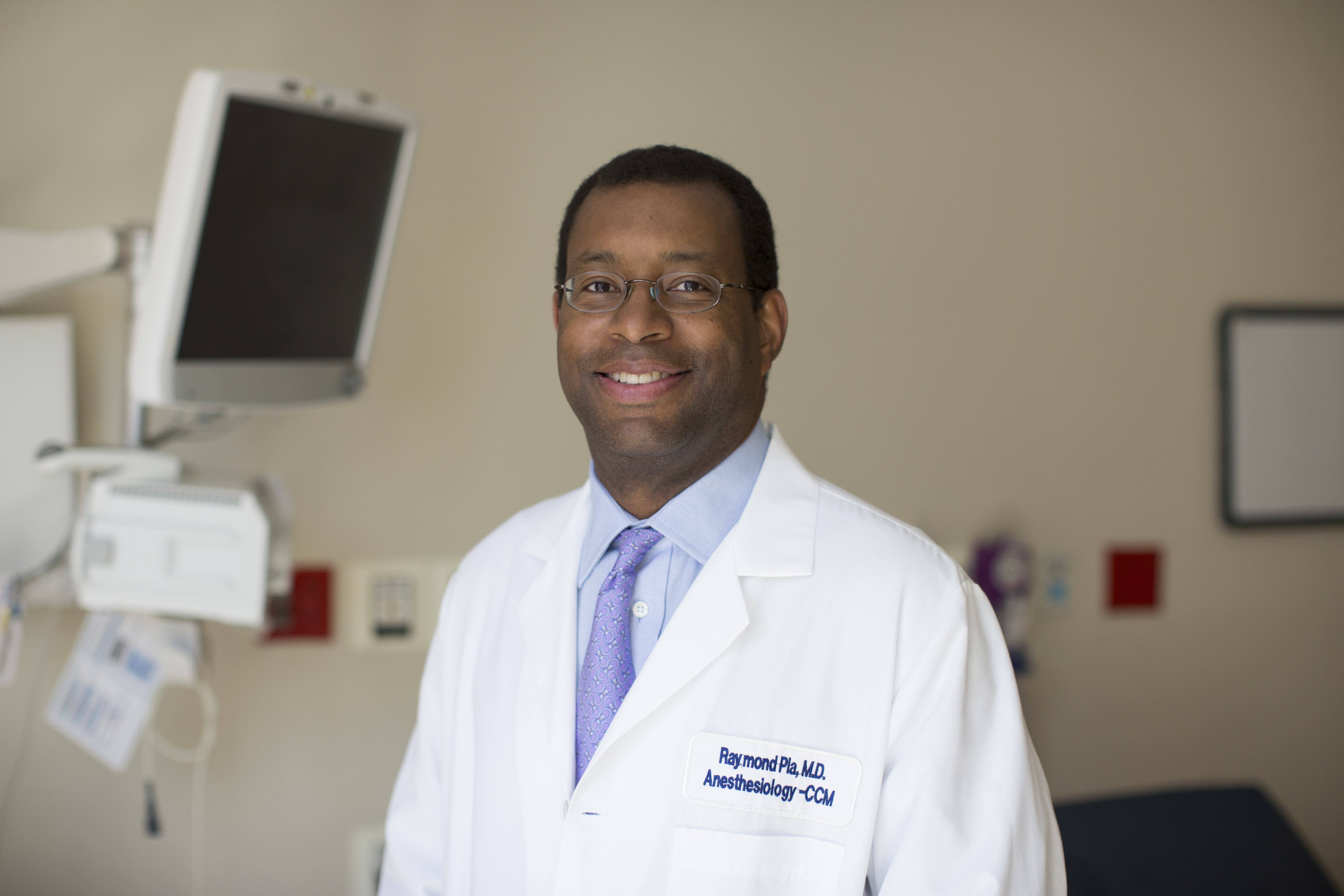Tackling Healthcare Disparities in the Black Community
February 2022
 As we honor the Black History Month theme of Black Health and Wellness, Raymond Pla, MD, discusses how the U.S. can address the healthcare disparities faced by the Black Community.
As we honor the Black History Month theme of Black Health and Wellness, Raymond Pla, MD, discusses how the U.S. can address the healthcare disparities faced by the Black Community.
Dr. Pla is a board-certified anesthesiologist and critical care medicine physician, as well as Assistant Professor of Anesthesiology and Critical Care Medicine at The George Washington University.
Q. The U.S. is experiencing a physician shortage, particularly when it comes to Black doctors. How does this affect the Black patient population?
A. The underrepresentation of Black doctors in the U.S. remains unchanged over the last 40 years. According to the Association of American Medical Colleges, in 2018, just 5 percent of physicians identify as Black, while Blacks make up 12 percent of the U.S. population.
This has real-life consequences, contributing to higher infant mortality rates for Black infants. This is particularly tragic as we are talking about dying before one has a chance to experience life, and these rates are largely preventable.
We have to keep in mind that the numbers are abysmal and some of the same forces are also at work with Latino and Native American physicians. These challenges extend to those communities as well.
It is going to take some time to increase the numbers. In the meantime, patients will continue to suffer. We really need to speak to some of the unconscious bias that leads to missed and delayed diagnoses. We must address that bias and speaking openly about its role in management and treatment decisions.
Q. The National Bureau of Economic Research reports that patients have better outcomes when they are treated by a physician of the same race. What are your thoughts on this?
A. Screenings for preventable causes of advanced disease and death (like colon, breast and prostate cancer) do not occur in the Black community at the same rate as in white communities. One cannot dispute that the screening disparities drive higher mortality.
Could we make a strong argument that increasing the proportion of Black doctors could be effective at driving screening participation rates up? I think there is a strong argument to be made there. Recruiting and training more Black physicians can narrow some health disparities.
Q. As a Black physician, how do you address the disparities with your patients?
A. We as a society need to address mental health challenges in the Black community. This is an area in which I have very candid talks with my patients. I educate them. Depression and anxiety are common, treatable diseases, and just like high blood pressure they can go unrecognized. They exert an insidious effect upon our overall well-being and are nothing of which to be ashamed.
Q. What measures can we take to increase the number of Black physicians in the U.S.?
A. I think initiatives aimed at improving the high school graduation rate, at making college more affordable, as well as improving retention and graduation rates, must be our first steps — all happening in concert.
We need to grow the pool of students to whom we expose STEM (science, technology, engineering and medicine) disciplines. Cutting into the dropout rate among Black students will help accomplish this and seems to me to be the most prudent first step.
Aiding with college affordability by cutting down loans and increasing grant and debt forgiveness makes medical school less fiscally daunting. Finally, other challenges exist in college communities that pose real threats to graduation. We should compile data as to the source(s) of these challenges and address them in a thoughtful way.
Q. Who inspired you to become a physician? Who are some Black physicians who continue to inspire you?
A. My heroes are all those who study health disparities and work to eradicate them. My mentors who encouraged me along the way were my father, himself a dentist, and Dr. Clive Callender, Professor of Surgery at Howard University. I spent a summer on his transplant team. I found the work of the anesthesiologists and the intensivists particularly fascinating.
I was inspired by the faculty at Meharry Medical College, my alma mater, and a nationally renowned treasure — one of four historically Black medical schools in the U.S. In fact, Meharry and Howard University combined have trained 80 percent of Black physicians and dentists practicing in the U.S. today.
Other mentors include Dr. Marquette Faulkner, a nephrologist at Meharry; Dr. Sekethia Smith, a former anesthesia resident and ICU fellow who trained at GW and inspired me to pursue that pathway; and Dr. Nilda Salaman, the greatest anesthesiology clinician and educator I have ever known. Dr. Marian Sherman is a colleague, mentor and dear friend who is fluent in the issues of healthcare disparities and views their eradication as a moral imperative.
Finally, here in Washington, D.C., Howard University Hospital is home to such giants in surgery as Dr. Charles Drew, Dr. LaSalle Leffall and Dr. Clive Callender. These are all larger-than-life figures who saved lives, grew the science, and trained countless physicians and surgeons to do the same!
